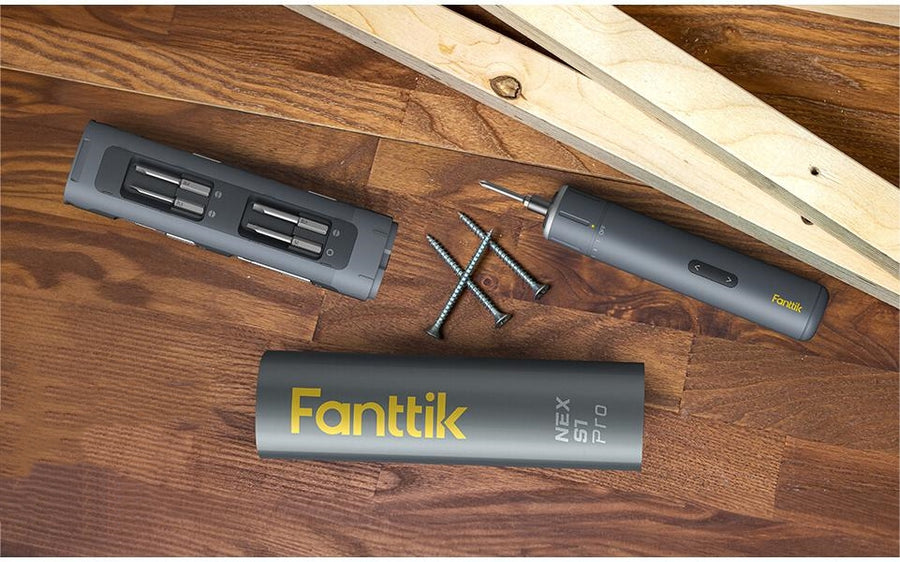How to Choose the Suitable Torque Settings for Industrial Applications with Electric Screwdrivers
Body
When it comes to industrial applications that require the use of electric screwdrivers, choosing the suitable torque settings is crucial for ensuring the quality and efficiency of the work. The torque setting determines the amount of force applied by the screwdriver, and finding the right balance is essential to avoid damaging the materials or components being worked on. In this article, we will explore the factors to consider and the steps to follow in order to choose the suitable torque settings for industrial applications with electric screwdrivers.

Understanding Torque
Before diving into the process of choosing torque settings, it is important to have a clear understanding of what torque is. Torque is the rotational force applied to an object, and it is measured in units of force multiplied by distance. In the context of electric screwdrivers, torque refers to the force applied to tighten or loosen a screw.
Factors to Consider
There are several factors that need to be taken into account when choosing the suitable torque settings for industrial applications with electric screwdrivers:
1. Material and Size of the Screw
The material and size of the screw being used play a significant role in determining the appropriate torque setting. Different materials and sizes require different levels of force to achieve the desired tightness. For example, a larger screw made of a harder material may require a higher torque setting compared to a smaller screw made of a softer material.
2. Material and Type of the Workpiece
The material and type of the workpiece being fastened also influence the torque setting. Delicate materials or fragile components may require a lower torque setting to prevent damage, while stronger materials may tolerate higher torque settings. It is important to consider the specific requirements of the workpiece to ensure proper fastening without causing any harm.
3. Desired Tightness
The desired tightness of the screw is another crucial factor to consider. Different applications may require different levels of tightness, and the torque setting should be adjusted accordingly. For example, in automotive assembly, certain screws need to be tightened to a specific torque specification to ensure proper functioning and safety.
4. Trial and Error
While there are guidelines and recommendations available for torque settings, it is important to remember that each application may have its own unique requirements. It is often necessary to perform trial and error to find the optimal torque setting. This involves testing different torque settings and evaluating the results to determine the best option for the specific application.
Steps to Choose the Suitable Torque Settings
Now that we have discussed the factors to consider, let's outline the steps to follow in order to choose the suitable torque settings:
1. Research and Consultation
Start by researching the recommended torque settings for the specific type of screw, material, and workpiece you are working with. Consult the manufacturer's guidelines, industry standards, and experts in the field to gather information and insights.
2. Initial Setting
Set the torque setting to the recommended starting point based on your research. This will serve as a baseline for further adjustments and testing.
3. Testing and Evaluation
Begin the trial and error process by testing the initial torque setting on a sample workpiece. Evaluate the results by checking the tightness of the screw and the integrity of the workpiece. Make adjustments to the torque setting as necessary.
4. Fine-Tuning
Continue testing and evaluating different torque settings, gradually increasing or decreasing the force applied by the screwdriver. Pay attention to the feedback from the workpiece and make fine-tuning adjustments until the desired tightness and integrity are achieved.
By following these steps and considering the factors mentioned earlier, you can choose the suitable torque settings for industrial applications with electric screwdrivers. Remember that finding the optimal torque setting may require time and experimentation, but the effort is worth it to ensure the quality and efficiency of your work.
Conclusion
Choosing the suitable torque settings for industrial applications with electric screwdrivers is a critical aspect of achieving accurate and reliable fastening. By considering factors such as the material and size of the screw, the material and type of the workpiece, the desired tightness, and performing trial and error, you can determine the optimal torque setting for your specific application. Remember to always consult guidelines and experts in the field to ensure the best results.
References
1. Example.com










Comments